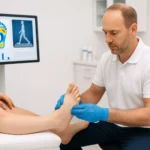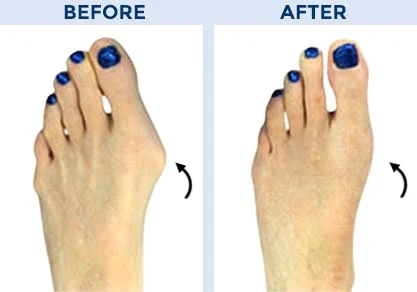
Understanding the Physical and Emotional Aspects of a Well-Woman Exam
October 1, 2025
How Urgent Care Can Provide Quick Relief for Minor Injuries
October 2, 2025Foot surgery addresses a range of health issues affecting the feet and ankles; it aims to resolve discomfort, restore function, or correct deformities. Recovery following surgery can benefit from structured support and guidance, along with professional oversight from a podiatrist. Podiatrists help monitor healing, manage pain, and reduce the risk of complications. Here’s information about the connection between podiatry and foot surgery recovery:
Structuring the Pre-Surgical Phase
Before the surgical date, podiatrists routinely perform thorough assessments that examine foot structure, overall health status, and lifestyle variables. These evaluations offer insight and create a foundation for determining appropriate surgical approaches. Patients can benefit from receiving detailed briefings about the procedure, hospital protocols, and the phases of healing that follow.
For some individuals, preparation before surgery requires addressing skin concerns or other health factors that could affect recovery. Reviewing these issues early is key to reducing possible complications after the procedure. A patient scheduled for bunion surgery may undergo an initial gait assessment and imaging to evaluate joint alignment. The podiatry specialist explains the surgical steps, outlines the expected healing timeline, and reviews footwear adjustments needed after surgery. If the patient has diabetes, extra measures, such as skin checks and blood sugar monitoring, can be incorporated into the pre-surgical plan to lower the risk of delayed healing.
Managing the Immediate Post-Surgery Period
Once surgery concludes, recovery enters its immediate phase. Podiatrists give specific protocols to support the body’s healing response and lower risks during this key transition. These recommendations may feature two primary focus areas:
- Wound Care: Sustaining a clean and protected surgical site is fundamental to recovery. Podiatrists outline methods for handling dressings, keeping the area dry, and observing for any warning signs.
- Pain and Swelling Management: Discomfort and swelling may follow surgical interventions. Strategies for an efficient recovery involve elevating the foot, adjusting activity levels, and following prescribed routines for comfort.
Supporting Rehabilitation and Physical Therapy
After the initial wounds begin to heal, attention shifts toward regaining function through rehabilitation. Podiatrists may work with physical therapists to build tailored rehabilitation plans. These strategies include targeted exercises to restore range of motion, balance, and muscular strength. Structured programs can be helpful for safely restoring normal activity and minimizing delays in recovery. Podiatrists regularly monitor progress; they adjust rehabilitation as needed and provide ongoing feedback. This sequence supports a steady, incremental return to daily activities and further safeguards against possible setbacks.
Extending Recovery Through Long-Term Management
Managing foot health after surgery does not end once wounds heal; ongoing follow-up visits are a key component of long-term management. During these appointments, podiatrists inspect the surgical site, assess overall foot health, and answer emerging concerns. Comprehensive post-surgical care may include helpful recommendations for footwear or custom orthotics that reinforce foot structure and prevent recurrence of issues. Ongoing care makes sure each patient remains vigilant about potential issues, such as changes in gait or the return of deformities, promoting optimal foot health.
Learn More About Podiatry and Surgical Recovery
Beginning with pre-surgical evaluation and continuing through rehabilitation and follow-up, podiatrists offer structured, fundamental support at each stage of foot surgery recovery. Thorough planning, careful management, and ongoing guidance provide a framework for efficient recovery. If you are contemplating foot surgery or are already in recovery, seeking podiatric expertise is key to navigating the process with clarity. Contact a qualified podiatrist for detailed support and guidance throughout your recovery experience.
- Soutaipasu: Exploring the Unique Japanese Subculture and Fusion Cuisine
- Wollmatten Guide: Benefits, Uses, Care Tips & Buying Advice for Natural Wool Mats
- Jadeitový kameň: Účinky, využitie, druhy a kompletný sprievodca
- Escapamento RD: Guia Completo, Modelos, Desempenho e Como Escolher o Melhor para Sua RD
- Sodiceram: Benefits, Uses, Installation & Complete Guide for Homeowners




